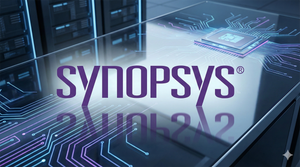
As of November 21, 2025, global financial markets are grappling with a palpable sense of unease, centered on the escalating valuations of big technology companies and the colossal sums being poured into Artificial Intelligence (AI) development. This convergence of factors has ignited a recent wave of stock market sell-offs, prompting investors to question the sustainability of the current AI boom and raising specter of a potential "AI bubble." The immediate implications include heightened market volatility, a rigorous re-evaluation of investment strategies, and a growing demand for tangible returns from the burgeoning AI sector.
The AI Gold Rush Meets Market Skepticism
The past few months have seen a dramatic acceleration in both AI technological advancements and the capital expenditures dedicated to it. However, this fervent pursuit of AI dominance is now clashing with a growing chorus of skepticism regarding the financial underpinnings of many AI-linked entities. A November 2025 Bank of America Global Fund Manager Survey revealed that a significant 45% of asset allocators consider an "AI bubble" to be the biggest tail risk, with 53% believing AI stocks are already in such a state. This sentiment has translated directly into market action, with the tech-heavy Nasdaq Composite experiencing a nearly 5% decline in November, and both the S&P 500 and Nasdaq tracking for their largest weekly losses since April.
Specific instances underscore this market anxiety. On November 21, 2025, the Dow Jones Industrial Average fell by 0.84%, the Nasdaq Composite dropped by 2.16%, and the S&P 500 declined by 1.56%. Even AI chip giant Nvidia (NASDAQ: NVDA) saw its stock fall 3.2% on November 20th, contributing to an approximate $450 billion loss in market capitalization over three days and an $800 billion loss over a few days in early November. Other semiconductor companies like Micron Technology (NASDAQ: MU), Advanced Micro Devices (NASDAQ: AMD), and Intel Corporation (NASDAQ: INTC) also experienced significant losses. Concerns about "circular financing" – where leading tech firms like Nvidia invest in OpenAI, which in turn commits to purchasing Nvidia chips – have also emerged, with critics questioning if this creates an artificial inflation of valuations rather than genuine market demand. Reports that OpenAI, despite its high profile, incurred billions in losses last quarter further fuel these anxieties.
Navigating the AI Landscape: Potential Winners and Losers
The current environment presents a bifurcated landscape where some companies are poised for significant gains, while others face increasing pressure to justify their valuations. Nvidia (NASDAQ: NVDA), despite recent pullbacks, remains a crucial player as the primary provider of the specialized hardware powering the AI revolution. Its continued dominance in AI chip manufacturing positions it as a long-term winner, provided the overall AI market continues its trajectory and its customers can monetize their AI investments. Similarly, other semiconductor firms like Advanced Micro Devices (NASDAQ: AMD) and Intel Corporation (NASDAQ: INTC), while experiencing recent dips, stand to benefit from the broader demand for AI infrastructure, albeit with intense competition.
On the other hand, companies with inflated valuations that lack clear paths to profitability or are perceived as overextended in their AI investments could face significant headwinds. Palantir Technologies (NYSE: PLTR), for instance, is currently viewed as significantly overvalued, trading at a 15% premium to its fair value estimate, implying a need for 45% annual revenue growth over the next five years to justify its current price. Even established giants like Microsoft Corporation (NASDAQ: MSFT) have seen their stock fall by 12% recently, partly due to investor concerns about AI's impact on their existing business models and a more subdued software spending environment as clients evaluate AI integrations. Companies like OpenAI, despite massive investments from partners, are under scrutiny for their high burn rate and lack of immediate profitability, raising questions about the long-term viability of their current financial model.
Major cloud providers and AI infrastructure developers such as Alphabet (NASDAQ: GOOGL) (Google Cloud) and Meta Platforms (NASDAQ: META) are pouring hundreds of billions into data centers and AI research. While these investments are crucial for future growth, the sheer scale of capital expenditure – Meta expects its CAPEX to exceed $100 billion next year, and Alphabet projects $91-$93 billion for 2025 – creates short-term cash flow strain and demands substantial future returns to justify the outlay. Companies that fail to efficiently translate these investments into profitable AI products and services risk disappointing investors and facing further stock corrections.
Wider Implications: A New Tech Paradigm or Echoes of the Past?
The current market dynamic surrounding AI and big tech valuations represents more than just a momentary blip; it signifies a critical juncture in the broader industry. The sheer scale of AI investment is unprecedented, with total AI spending expected to surpass $1.6 trillion, and US mega-cap companies alone anticipated to spend $1.1 trillion between 2026 and 2029. This rapid build-out of AI infrastructure is reshaping competitive landscapes, forcing every major tech player to adapt or risk obsolescence. The demand for proprietary datasets, specialized talent, and cutting-edge hardware is creating new ecosystems and exacerbating existing talent wars.
However, the concerns about an "AI bubble" draw stark comparisons to the dot-com bubble of the late 1990s, where speculative fervor outpaced fundamental value. A significant difference today is the tangible technological advancements and real-world applications of AI, unlike many of the vaporware companies of the dot-com era. Yet, the rapid accumulation of debt to fund AI infrastructure is a worrying trend. U.S. companies have already issued over $200 billion in corporate bonds this year for AI projects. Analysts warn of a potential mismatch where companies are taking on long-term debt (30-40 years) for assets like data centers that have much shorter depreciation cycles (around four years), creating significant cash flow strain and increased financial risk. Regulatory bodies are also likely to scrutinize the anti-competitive implications of massive AI spending and data monopolies, potentially leading to new policy frameworks or antitrust actions down the line. The MIT report in August 2025, indicating that 95% of organizations are currently seeing zero return on their generative AI investments, highlights a critical disconnect between investment and immediate utility, posing a significant challenge for the industry's long-term sustainability.
What Comes Next: A Reckoning or a Reaffirmation?
The coming months will be crucial in determining whether the current market jitters evolve into a deeper correction or if the underlying strength of AI innovation can reassert itself. In the short term, investors can expect continued volatility as the market attempts to distinguish between genuine AI leaders with sustainable business models and those whose valuations are primarily driven by hype. Companies will face intense pressure to demonstrate clear revenue streams and profitability from their AI investments, moving beyond mere promises of future potential. Strategic pivots are likely, with some companies potentially scaling back ambitious AI projects or re-prioritizing those with clearer, more immediate returns on investment.
Longer term, the market will likely become more discerning, rewarding companies that can integrate AI effectively to enhance existing products, create new markets, and drive operational efficiencies. This could lead to a consolidation phase, where smaller, less capitalized AI startups are acquired by larger tech giants. Market opportunities will emerge for companies providing specialized AI services, robust data security solutions for AI models, and efficient AI governance frameworks. Challenges include managing the enormous energy consumption of AI data centers, addressing ethical concerns around AI, and navigating potential regulatory hurdles. Scenarios range from a soft landing, where valuations gradually normalize as AI profitability improves, to a more severe correction if the promised returns fail to materialize, potentially impacting the broader economy.
The AI Revolution: A Defining Moment for Markets
The current market sell-off, driven by concerns over big tech valuations and the staggering pace of AI spending, marks a defining moment for the financial markets. It underscores a critical re-evaluation of how technology companies are valued and the inherent risks associated with periods of rapid technological disruption. While the transformative potential of AI is undeniable, the market is now demanding greater transparency, accountability, and, most importantly, tangible returns from these massive investments. The key takeaway is a shift from speculative enthusiasm to a more fundamental assessment of financial health and sustainable growth.
Moving forward, investors should closely watch for several indicators: the quarterly earnings reports of major tech companies, specifically looking for evidence of AI-driven revenue growth and improved profitability; any shifts in capital expenditure guidance, which could signal a more cautious approach to AI investment; and regulatory developments that might impact the competitive landscape or data governance. The market will also be keenly observing the broader economic environment, including interest rate decisions and employment data, which could either exacerbate or alleviate the current "risk-off" sentiment. The AI revolution is far from over, but its financial narrative is entering a new, more scrutinizing chapter.
This content is intended for informational purposes only and is not financial advice






